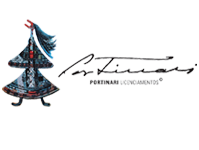You can find out more about the painter's life and work by consulting the books recommended in The Artist > Bibliography. And in other sections of The Artist menu.
1903
Candido Portinari is born on December 30, 1903 on a coffee farm (Fazenda Santa Rosa) near the town of Brodowski in the state of São Paulo, at the time a village with around 700 residents. He is the second of 12 children born to Italians Baptista Portinari and Dominga Torquato, who both came to Brazil from Italy’s Veneto region at the end of the 19th century, when the coffee culture was in expansion.
1906
Baptista and Dominga leave the farm and become trades people in Brodowski, a stop where trains picked up coffee and migrants passed in search of work.
1911
Portinari goes to school in Brodowski, probably between 1911 and 1916, going no further than the third grade.
1914
At age 10, Portinari makes Portrait of Carlos Gomes, his first drawing for which there is documentation.
1918
A group of Italian painters and sculptors visited Brodowski as they travelled around doing the decorative artwork of small town churches. Candido is called to help, together with his childhood friend Modesto Giordano, who says:
"He (Portinari) stayed there working. Early in the day he was the first to arrive [...] he barely went home to eat [...]. [He was] all he wanted was to learn the art of painting."
Video 'Beginning of Candido Portinari's career':
1919
Candido Portinari moves to Rio de Janeiro with the Toledo family, friends of the Portinari family and owners of a boarding house at Avenida Passos, No. 44. Portinari lives there, doing odd jobs. In the capital, he enrolls in the Lyceum of Arts and Trades.
1920
Portinari enrolls as a non-degree student at the National School of Fine Arts (ENBA), regularly attending figure drawing classes. He finds a tense and contradictory environment with strict rules.
1921
He moved to a boarding house at 23 Marquesa de Santos Street and continued his training at ENBA with Professors Lucílio de Albuquerque, Rodolfo Amoedo, Rodolfo Chambelland and Baptista da Costa, among others.
1922
Throughout his time at National School of Fine Arts, he took part in its General Exhibitions, the so-called annual 'salons', the top prize of which was the coveted study trip to Europe. In November Portinari shows his work for the first time and receives an Honorable Mention for a portrait, probably of his friend Ezequiel Fonseca Filho.
1923
He attends Professor Baptista da Costa's painting classes at National School of Fine Arts. In August, his portrait was awarded a Bronze Medal, a cash prize and the Galeria Jorge Prize at the Salon. His name began to be mentioned in the press. He gets a new job painting the signs of a bookshop.
1924
Portinari submits to the selection panel of the National School of Fine Arts Salon seven portraits and Country Dance, his first work with a Brazilian theme, painted during his summer vacation in Brodowski. The portraits are accepted, but Country Dance is not.
1925
In May 1925, Portinari, then 21, took part in the IIII Salão da Primavera with two portraits and gave his first interview, published in the Jornal do Brasil on May 6, entitled "Words from a young portrait painter from Brazil". Here's what he says: "The target of my painting is feeling. For me, technique is merely a means. But an indispensable means". In August, at the XXXII General Exhibition of Fine Arts, he wins the Small Silver Medal, which qualifies him to compete for the Travel Prize.
1926
In August, he took part in the ENBA Salon with two portraits, competing for the first time for the Travel Prize to Europe. He didn't achieve this goal, but he did win the Jorge Gallery Prize and a cash prize. In an interview, he criticizes the 'false modernists', those who, in his view, are "those who have not studied the essence and the academic process, and rebel against it because it presents difficulties, and not because it is an expression of old age or tiredness". In another interview, he addresses the issue of national art: "Brazilian art will only exist when our artists completely abandon useless traditions and give themselves, with all their soul, to the sincere interpretation of our environment."
1927
In August, he presented three portraits at the ENBA Salon, again competing for the Travel Prize. He was awarded the Grand Silver Medal.
1928
A pivotal year in Portinari’s artistic development. The painter presents 12 works to the XXXV General Exhibition of Fine Arts and wins the European Travel Prize with Portrait of Olegário Mariano. The press notes the artist’s win.
1929
Portinari has his first solo exhibition, with 25 portraits, at the Palace Hotel in Rio de Janeiro, an initiative of the Brazilian Artists Association, headed by Celso Kelly. He sails for Europe on the Brazilian ship Bagé.
In Paris, he stays temporarily in Montparnasse, a haven for artists of the period. He soon moves to the Hôtel du Dragon and begins his study program. He decides not to attend the Académie Julien, as did most ENBA prize winners.
1930
Portinari wrote to Rosalita Mendes de Almeida, a colleague at ENBA. It's the letter from Palaninho (CO-4545.1), a true declaration of intent, in which the Brazil that moved Portinari and that he intended to portray on his return appears in all its strength: "Palaninho is from my land, he's from Brodósqui!" he announces, giving a detailed, plastic and moving description of Palaninho and his family, simple people, typical of the countryside:
"…Palaninho is from my land, from Brodowski. …I came here to get to know Palaninho, after having seen so many museums and castles and civilized people… There in Brazil I never used to think about Palaninho… From here I could see my own land more clearly – I could see Brodowski as it is. Here I have no urge to do anything… I’m going to paint Palaninho, I’m going to paint those people with those clothes and that coloring..."
He participates in the group exhibition of Brazilian art in Paris - Exposition d’Art Brésilien, in the Foyer Brésilien, entering two works: a portrait and a still life. He meets Maria Victoria Martinelli, a nineteen year old Uruguayan living with her family in Paris, who will become his lifelong companion.
1931
The couple returns to Brazil. Candido Portinari brings six works in his luggage: three still lifes, a nude, a self-portrait and a small portrait of Maria. Once back, he resumes prolific painting in order to support the couple.
1932
Portinari presents over 60 works in a solo exhibition at the Palace Hotel promoted by the Brazilian Artists Association. For the first time the artist shows paintings with Brazilian themes, primarily scenes of childhood, the circus and circle games.
1933
Portinari and Maria moved into an apartment in the Laranjeiras neighborhood, at 143 Rua Pires de Almeida. Mário de Andrade commented that this absence of social art among us is a sensitive flaw and art historian Annateresa Fabris, in her thesis "Portinari, social painter", commented: "social concerns began to take shape among the modernists". This concern seems to anticipate the role that Portinari would play from that moment on. In July, Portinari exhibited again at the Palace Hotel and, in November, he sent six works to the 2nd Modern Art Exhibition of SPAM (Sociedade Pró-Arte Moderna), in São Paulo.
1934
Portinari paints The Evicted, his first work with a social theme. The painting Mestizo is purchased by the São Paulo State Pinacoteca, the first public institution to include a work by Portinari in its collection.
1935
At the invitation of Celso Kelly he is hired to teach mural and easel painting at the Art Institute of the Federal District University (UDF) in Rio de Janeiro. His painting Coffee enters the Carnegie Institute exhibition in Pittsburgh and wins Second Honorable Mention.
1936
In January, the first exhibition of Portinari's work by UDF students was held at the Palace Hotel. The artist created four large panels for the Highway Monument on the Presidente Dutra highway, which connects Rio de Janeiro to São Paulo.
1937
He decides to do the murals for the Ministry of Education and Health in fresco, a technique that was still pioneering in Brazil. Portinari sends 25 works to the 1st May Salon in São Paulo.
1938
Portinari makes hundreds of studies in charcoal, crayon, tempera, gouache and watercolor for the execution of 12 fresco murals for the Ministry of Education, now the Gustavo Capanema Palace, Rio de Janeiro.
1939
On January 20, President Getúlio Vargas decrees that the UDF is to close, consequently ending Portinari’s teaching career. His son João Candido is born. Portinari paints the panels Northeastern Rafts, Gaúcha Scene and Night of Saint John for the New York World's Fair Brazilian Pavilion, with architectural design by Lucio Costa and Oscar Niemeyer. The largest Portinari exhibition, with 269 works, opens at the National Museum of Fine Arts. Manuel Bandeira and Mário de Andrade write the catalogue preface.
1940
He enters 35 works in the Latin American Exhibition of Fine Arts (Mostra Latino-Americana de Arte) at the Riverside Museum in New York. The exhibition Portinari of Brazil, with approximately 180 works, is held at New York’s Museum of Modern Art (MoMA) and subsequently tours a number of cities in the United States.
1941
The University of Chicago publishes the book Portinari, His Life and Art. 1941 Portinari paints Nonna’s Little Chapel for his grandmother Pellegrina in a room in the family home in Brodowski. The life-size saints that adorn the walls depict people in the artist’s family. An exhibition opens at the Howard University Gallery of Art in Washington.
1942
His murals are inaugurated in the Hispanic Foundation of the Library of Congress in Washington. The panels have a Latin American historical theme.
1943
A solo Portinari exhibition of 168 works opens at the National Museum of Fine Arts. The Posthumous Memoirs of Bras Cubas, by Machado de Assis, is the first book published by the Society of One Hundred Bibliophiles of Brazil and features illustrations by Candido Portinari.
1944
Portinari enters an exhibition commemorating the 15 year anniversary of MoMA – Art in Progress, with the works Scarecrow and Settlers Carrying Coffee. Portinari paints the panels in the Migrants Series. The Pampulha architectural complex in Belo Horizonte is completed. Then Mayor Juscelino Kubitschek had commissioned Oscar Niemeyer to design it, including the Church of Saint Francis of Assisi for which Candido Portinari did the decorative artwork, with exterior tiles and a mural painting on the interior.
1945
Portinari’s growing political concern inspires him to run for a seat in the house of representatives. His platform argues for constituent power founded on popular support for culture, organized labor among the peasantry, a stance against exaggerated prices, inflation, landlordism and fundamentalism.
1946
The Charpentier Gallery in Paris inaugurates a Portinari exhibition with 84 works. The French government inducts Candido Portinari into the Legion of Honor.
1947
He runs as a Communist Party of Brazil candidate for the Senate but loses by a narrow margin. His first solo exhibition in Argentina opens at the Salón Peuser, in Buenos Aires, with 91 works. The administration of President Eurico Dutra intensifies its persecution of Communists. In November, Portinari goes into voluntary exile in Uruguay. In December, the Portinari family joins the artist.
1948
In the Teatro Solis, in Montevideo, the panel The First Mass in Brazil is shown; it was painted for the new headquarters of Banco Boavista, in Rio de Janeiro. Portinari returns to Brazil and in December has a retrospective exhibition at São Paulo’s MASP.
1949
Portinari executes the Tiradentes panel for the Cataguases School in Minas Gerais. He is invited to participate in the Scientific and Cultural Conference for World Peace in New York, but the U.S. Ambassador denies his visa to enter the country. Portinari is summoned to appear before the Central Police authorities to provide explanations regarding his role with the University of the People.
1950
Portinari visits for the first time Chiampo, his father’s home city in the Veneto region. He receives the Gold Medal of Peace from the II World Congress of Defenders of Peace, in Warsaw, for the panel Tiradentes.
1951
Portinari enters the I Biennial of São Paulo.
1952
Portinari makes the panel The Arrival of D. João VI in Bahia, commissioned by Banco da Bahia. The United Nations secretary-general announces that the Brazilian government has offered two panels (War and Peace), to be made by Portinari, to decorate one of the halls of the UN’s new headquarters building.
1953
He is hospitalized in Rio de Janeiro after suffering intestinal hemorrhaging. The diagnosis indicates problems have arisen from the use of paints containing heavy metals like lead, cadmium and silver. After ten years without a solo exhibition in Rio de Janeiro, Portinari opens an exhibition of 100 works at the Museum of Modern Art (MAM).
1954
A solo exhibition opens at the São Paulo Museum of Art (MASP) with over 100 works, among them two models for the War and Peace panels, a gift from the Brazilian government for the UN headquarters in New York. Medical orders put a halt to Portinari’s painting for some time. Lead in the paints is causing his illness. "I am forbidden to live", says Portinari.
1955
An agreement is signed between Portinari and the Ministry of Foreign Affairs for the artist to make the War and Peace panels, whose studies are already well underway. Portinari has a special room, hors concours, at the III Biennial of São Paulo, entering 12 large sized studies for the War panel. The International Fine Arts Council (IFAC) of New York awards Portinari a Gold Medal for best painter of the year.
1956
Portinari delivers War and Peace. The panels, measuring 14m x 10m each, were made in oil on ship plywood over a period of nine months, with assistance from Enrico Bianco and Rosalina Leão. Before they go to the UN headquarters in Nova York, Brazilian President Juscelino Kubitschek inaugurates an exhibition of the panels at the Municipal Theater of Rio de Janeiro. For the first and only time Portinari saw War and Peace mounted. At the exhibition opening, President Kubitschek gives Portinari the Gold Medal he received from the International Fine Arts Council in 1955. Portinari makes the D. Quixote Series, comprised of 22 colored pencil drawings and commissioned by José Olympio publishing house to illustrate the poems by Carlos Drummond de Andrade.
1957
Portinari has a solo exhibition at the Maison de la Pensée Française, in Paris, sponsored by the Brazilian Embassy. The exhibition then goes to Munich and Cologne, in Germany. The War and Peace panels are given to the UN in an official ceremony. Portinari is not invited to attend the ceremony due to his involvement with the Communist Party and is represented by Ambassador Cyro de Freitas-Valle. Launching his literary pursuits, Portinari begins to write Retalhos de minha vida de infância [Fragments from my Childhood].
1958
Portinari’s first solo exhibition in his parents’ home country opens, at the Galleria del Libraio in Bologna, Italy. The artist is summoned to appear before the National Security Council, along with Oscar Niemeyer, Arnaldo Estrela, Dalcídio Jurandir and others for their work with the School of the People.
1959
The travelling exhibition Brazilian Artists in Europe begins, organized by the Rio de Janeiro Museum of Modern Art. He does the illustrations for the book Plantation Boy, by José Lins do Rego, published by the Society of One Hundred Bibliophiles of Brazil. The V Biennial of São Paulo has a retrospective of Portinari’s work with 127 pieces.
1960
Denise is born, Candido Portinari’s granddaughter. On this day Portinari writes:
"My granddaughter will free me from loneliness."
The artist will go on to depict his granddaughter in poetry and painting. In Italy the book is published called Brasil, dipinti di Portinari (Brazil, Painting by Portinari).
1961
On a trip to France, the French government prevents him from entering the country. Negotiations finally yield a 60 day visa with the condition that he not make any political statements. He returns to Brazil with waning health. He has the last solo exhibition of his life, at the Bonino Gallery in Rio de Janeiro. Portinari makes three tile panels: Frevo and Fish, for the Pampulha Yacht Club, designed by Oscar Niemeyer, and Doves, for a building in Paris.
1962
Portinari dies on February 6, poisoned by the heavy metals in his paints. The memorial service is held at the Ministry of Education headquarters building, today’s Gustavo Capanema Palace. In attendance were former Brazilian President Juscelino Kubitschek, Hermes Lima, representing President João Goulart, clandestine Communist leaders Luis Carlos Prestes and Carlos Marighela, and the anticommunist leader and governor of Guanabara State Carlos Lacerda. The federal government issues a death notice and three days of mourning are declared in Guanabara State.











































































